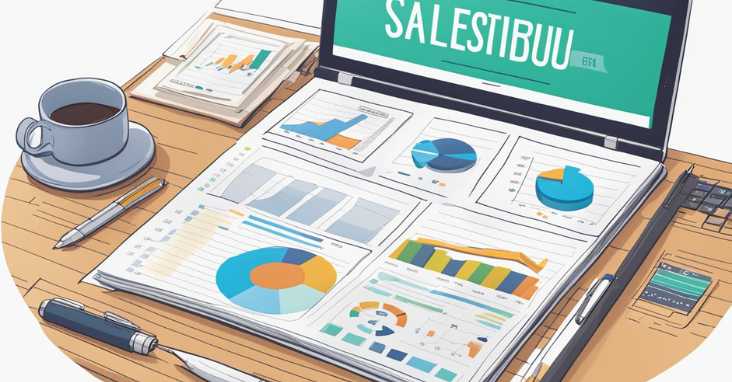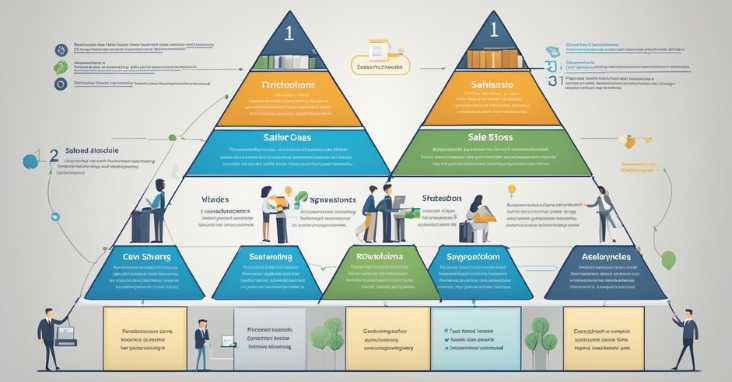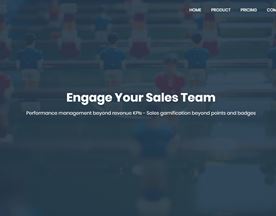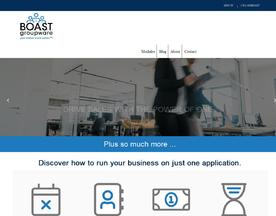What is a sales playbook? A sales playbook is a comprehensive guide detailing strategies, tools, and processes to empower sales teams to close deals efficiently.
Sales playbooks are an essential tool for any sales team looking to improve their performance and close more deals. A sales playbook is essentially a guide that outlines the steps a sales team should take to achieve their goals, from prospecting to closing deals. It provides a framework that sales reps can follow to ensure they are using the most effective strategies and tactics to win deals.

Understanding sales playbooks is crucial for any sales team looking to improve their performance. A well-designed sales playbook can help sales reps stay organized, focused, and on track, which can ultimately lead to more closed deals. It can also help ensure that all members of the sales team are aligned, using the same strategies and tactics, and working towards the same goals. Developing a sales playbook requires a deep understanding of the sales process, the target market, and the competitive landscape, as well as a commitment to continuous improvement.
Key Takeaways
- Sales playbooks are essential tools for any sales team looking to improve their performance and close more deals.
- A well-designed sales playbook can help sales reps stay organized, focused, and on track, and ensure that all members of the sales team are aligned.
- Developing a sales playbook requires a deep understanding of the sales process, the target market, and the competitive landscape, as well as a commitment to continuous improvement.
Understanding Sales Playbooks
Definition and Purpose
Sales playbooks are a set of guidelines and best practices that sales teams use to help them navigate the sales process. The purpose of a sales playbook is to provide a consistent framework for sales reps to follow, ensuring that they are equipped with the tools and knowledge they need to close deals successfully. Sales playbooks can be used for a variety of different sales strategies and processes, including account-based selling, inbound sales, and outbound sales.
Elements of a Sales Playbook
A sales playbook typically includes several key elements, including:
- Sales strategy: This outlines the overall approach that the sales team will take to achieve their goals. It may include information about target markets, buyer personas, and sales messaging.
- Sales process: This defines the steps that the sales team will take to move prospects through the sales funnel. It may include information about lead generation, qualification, and closing.
- Sales plays: These are specific tactics that the sales team can use to address common objections or challenges that they may encounter during the sales process. Sales plays may include scripts, email templates, and objection-handling guides.
- Sales metrics: This includes the key performance indicators (KPIs) that the sales team will use to measure their success. Common sales metrics include conversion rates, win rates, and average deal size.
By providing a clear framework for sales reps to follow, sales playbooks can help to improve the efficiency and effectiveness of the sales process. They can also help to ensure that sales reps are consistently using the best practices and tactics that have been proven to work.
For more information on creating a successful sales playbook, check out this resource from Salesforce, a leading provider of customer relationship management (CRM) software.
Developing a Sales Strategy
Developing a sales strategy is a crucial step for any business looking to increase revenue and grow its customer base. A well-planned sales strategy can help businesses achieve their sales goals, identify their target market, and create buyer personas that resonate with their ideal customers.
Setting Sales Goals
Setting sales goals is an essential part of any sales strategy. Sales goals provide a clear direction for the sales team and help measure progress towards achieving the desired outcome. When setting sales goals, it is important to consider the industry, the target market, and the company’s overall objectives. The sales team should also have a clear understanding of the sales goals, how they will be measured, and the timeline for achieving them.
Identifying Target Market
Identifying the target market is another critical component of developing a sales strategy. The target market is the group of people or businesses that are most likely to purchase the company’s products or services. To identify the target market, businesses should consider factors such as demographics, psychographics, and behavior. Understanding the target market helps the sales team tailor their approach and messaging to resonate with potential customers.
Creating Buyer Personas
Creating buyer personas is an effective way to understand the target market and tailor the sales approach to their specific needs. A buyer persona is a fictional representation of the ideal customer, based on research and data about their behavior, demographics, and preferences. Creating buyer personas helps the sales team understand the customer’s pain points, motivations, and decision-making process. This information can then be used to create targeted messaging and sales strategies that resonate with potential customers.
To learn more about developing a sales strategy, check out this article by Salesforce.
Building the Sales Process
A sales playbook is a crucial tool that helps sales teams achieve their goals. One of the most important aspects of a sales playbook is building a solid sales process. A well-defined sales process is essential for sales teams to be efficient and effective in their work.
Prospecting and Lead Qualification
The first step in building a sales process is to identify the target audience and create a prospecting plan. Prospecting involves identifying potential customers and reaching out to them to gauge their interest in the product or service. Once a prospect is identified, the next step is lead qualification. This involves determining whether the prospect is a good fit for the product or service and whether they have the budget and authority to make a purchase.
To ensure that the prospecting and lead qualification process is effective, it is important to have a clear understanding of the target audience and to use the right tools and techniques. Sales teams can use various tools such as CRM software to track their interactions with prospects and to manage their pipeline.
Sales Methodologies
Sales methodologies refer to the frameworks and strategies that sales teams use to close deals. There are various sales methodologies that can be used, such as consultative selling, challenger selling, and solution selling. Each methodology has its own strengths and weaknesses, and it is important for sales teams to choose the right one based on their product or service and target audience.
Sales teams can also use a combination of different methodologies to achieve their goals. For example, they can use consultative selling to build relationships with prospects and solution selling to demonstrate the value of their product or service.
Managing the Sales Funnel
The sales funnel is a visual representation of the sales process, and it helps sales teams track their progress and identify areas for improvement. The sales funnel consists of different stages, such as lead generation, lead qualification, and closing the deal.
To manage the sales funnel effectively, sales teams need to have a clear understanding of the different stages and the activities that need to be performed at each stage. They also need to track their progress and identify areas where they can improve their performance.
In conclusion, building a sales process is a critical component of a successful sales playbook. By focusing on prospecting and lead qualification, sales methodologies, and managing the sales funnel, sales teams can improve their efficiency and effectiveness. To learn more about building a sales process, check out this resource.
Sales Team Structure and Roles

Organizational Chart
Before discussing the roles and responsibilities of the sales team, it is important to understand the organizational chart of the team. A typical sales team structure consists of a sales manager who oversees the team, and then a number of sales representatives who report to the manager.
The sales manager is responsible for setting sales targets, developing sales strategies, and managing the overall performance of the team. They are also responsible for recruiting, training, and motivating sales representatives to achieve their targets.
Roles and Responsibilities
Each member of the sales team has a specific role and set of responsibilities. Sales representatives are responsible for generating leads, developing relationships with customers, and closing sales. They must have excellent communication skills, be able to identify customer needs, and be able to present the benefits of the product or service they are selling.
In addition to sales representatives, some sales teams also include sales development representatives (SDRs). SDRs are responsible for generating leads and qualifying them before passing them on to the sales team. They must be able to research potential customers, identify decision-makers, and use various techniques to engage with them.
Sales teams may also have account managers who are responsible for managing existing customer accounts. They must be able to build strong relationships with customers, identify opportunities for upselling and cross-selling, and ensure customer satisfaction.
It is important for each member of the sales team to understand their role and responsibilities, and to work together to achieve the overall sales targets set by the sales manager.
To learn more about sales team structure and roles, check out this resource from Salesforce, a leading provider of customer relationship management (CRM) software.
Sales Enablement

Sales enablement is the process of providing sales teams with the necessary resources, tools, and training to help them sell more effectively. It is essential for businesses to have a well-defined sales enablement strategy in place to ensure that their sales teams are equipped with the right skills and knowledge to succeed.
Training and Development
Training and development are integral components of any sales enablement strategy. Businesses need to invest in their sales teams by providing them with regular training and development opportunities to help them stay up-to-date with the latest industry trends and best practices.
One effective way to provide sales training is through online courses or webinars. These resources can be accessed at any time, allowing sales reps to learn at their own pace. Additionally, role-playing exercises can be used to help sales reps practice their skills and improve their performance.
Sales Enablement Materials
Sales enablement materials are resources that sales reps can use to support their sales efforts. These materials can include product brochures, case studies, white papers, and sales scripts. They should be designed to help sales reps communicate the value of a product or service to potential customers.
One effective way to create sales enablement materials is by using a content management system (CMS). A CMS allows businesses to store and organize their sales enablement materials in a central location, making it easy for sales reps to access them when needed.
High-quality sales enablement materials can also be used to support inbound marketing efforts. By creating valuable content that addresses the needs and pain points of potential customers, businesses can attract leads and nurture them through the sales funnel.
For more information on sales enablement, check out this article by Salesforce.
Effective Sales Plays

A sales playbook is a comprehensive guide that outlines a company’s sales process, strategies, and tactics. The playbook helps sales reps to understand the sales process, identify the target audience, and close deals more efficiently. In this section, we will discuss some of the effective sales plays that can help sales reps to close more deals.
Lead Qualification Play
The lead qualification play is the most crucial step in the sales process. It involves identifying potential customers who are interested in your product or service. Sales reps should use a lead scoring system to prioritize leads based on their level of interest and buying intent. This will help them focus on the most promising leads and avoid wasting time on unqualified leads.
Demo Play
The demo play is an essential part of the sales process. It involves showcasing the product or service to the potential customer. Sales reps should prepare a compelling demo that highlights the unique features and benefits of the product or service. They should also tailor the demo to the needs and interests of the potential customer. This will help to build trust and credibility with the customer.
Closing Play
The closing play is the final step in the sales process. It involves asking the potential customer to make a purchase. Sales reps should use a variety of closing techniques, such as the assumptive close, the urgency close, and the alternative close. They should also be prepared to handle objections and negotiate the terms of the sale.
Follow-Up Play
The follow-up play is critical for maintaining a relationship with the customer. Sales reps should follow up with the customer after the sale to ensure that they are satisfied with the product or service. They should also use this opportunity to upsell or cross-sell additional products or services.
To learn more about effective sales plays, check out this resource from Sales Hacker.
Tools and Resources

When it comes to creating a successful sales playbook, having the right tools and resources can make all the difference. Here are some essential resources that can help your sales team close more deals:
Sales Kits and Documents
Sales kits and documents are an essential part of any sales playbook. They provide your sales team with the information they need to effectively sell your products or services. Some of the most common sales kits and documents include:
- Product brochures: These provide an overview of your products or services, including features, benefits, and pricing information.
- Case studies: These demonstrate how your products or services have helped other customers solve similar problems.
- Sales scripts: These provide a step-by-step guide for your sales team to follow during sales calls or meetings.
- Competitive analysis: This compares your products or services to your competitors, highlighting your unique selling points.
By providing your sales team with these resources, you can help them close more deals and increase revenue.
CRM and Sales Software
Effective sales playbook also requires the right software tools. Customer Relationship Management (CRM) software can help your sales team manage leads, track customer interactions, and close deals more efficiently. Some popular CRM software options include Salesforce, HubSpot, and Zoho.
In addition to CRM software, there are many other sales tools that can help your team be more productive and effective. For example, sales enablement software can help your team access and share sales kits and documents more easily. Sales analytics software can help you track key metrics and identify areas for improvement.
Overall, having the right tools and resources is essential for creating a successful sales playbook. By providing your sales team with the right support, you can help them close more deals and drive business growth.
For more information on sales playbook and how to create one, check out this article by Forbes Agency Council.
Measuring Success

To ensure the success of a sales playbook, it is important to measure its effectiveness. This can be achieved through a combination of key performance indicators (KPIs), sales reporting, and feedback.
Key Performance Indicators
KPIs are quantifiable metrics used to evaluate the success of a sales playbook. These metrics can include the number of leads generated, the conversion rate, and the average deal size. By tracking these KPIs, sales teams can identify areas that need improvement and adjust their strategies accordingly.
Sales Reporting and Feedback
Sales reporting and feedback are crucial components of measuring the success of a sales playbook. Sales teams should regularly analyze their performance data and provide feedback to their sales managers. This feedback can be used to improve the sales playbook and ensure that it is meeting the needs of the sales team.
One useful resource for measuring the success of a sales playbook is the Sales Playbook Template provided by HubSpot. This template includes a variety of KPIs and sales reporting tools that can help sales teams track their performance and identify areas for improvement.
In conclusion, measuring the success of a sales playbook is essential for ensuring that it is effective and meeting the needs of the sales team. By using KPIs, sales reporting, and feedback, sales teams can continually improve their performance and achieve their sales goals.
Continuous Improvement

Continuous improvement is an essential aspect of any sales playbook. It involves analyzing and evaluating sales strategies and practices to identify areas for improvement. By continuously improving, sales teams can stay up-to-date with the latest trends and techniques, and ensure that they are always delivering the best possible results.
Sales Coaching and Feedback
Sales coaching and feedback are critical components of continuous improvement. By providing regular coaching and feedback, sales managers can help their team members identify areas for improvement and develop strategies to address them. This can include providing training on new sales techniques, offering guidance on how to handle specific situations, and providing feedback on performance.
One effective approach to sales coaching is to use a “coaching playbook.” This is a document that outlines best practices for coaching and feedback, as well as specific strategies for addressing common sales challenges. By using a coaching playbook, sales managers can ensure that they are providing consistent, high-quality coaching to their team members.
Iterating Sales Strategies
Another key aspect of continuous improvement is iterating sales strategies. This involves regularly reviewing and updating sales strategies to ensure that they are aligned with the latest trends and best practices. Sales teams can use data analytics tools to track their performance and identify areas for improvement, and then adjust their strategies accordingly.
One effective strategy for iterating sales strategies is to use an “agile” approach. This involves breaking down sales strategies into smaller, more manageable components, and then testing and refining each component individually. By using an agile approach, sales teams can quickly identify what works and what doesn’t, and make adjustments in real-time.
To learn more about best practices for continuous improvement in sales, check out this article by Salesforce.
Frequently Asked Questions

How do you structure an effective sales playbook?
An effective sales playbook should be structured in a way that is easy to navigate and understand. It should include clear instructions and guidelines for each stage of the sales process, as well as tips and best practices for sales representatives. A well-structured sales playbook can help streamline the sales process and increase overall productivity.
What are the key components of a successful sales playbook?
A successful sales playbook should include a variety of components, including target customer profiles, sales scripts, objection handling techniques, and closing strategies. It should also include information on the company’s products and services, as well as competitive analysis and market research.
What strategies should be included in a sales playbook for optimal performance?
To optimize performance, a sales playbook should include a range of strategies, such as lead generation techniques, effective communication skills, and effective time management techniques. It should also include strategies for building rapport with potential customers, as well as techniques for overcoming objections and closing deals.
How often should a sales playbook be updated to remain effective?
To remain effective, a sales playbook should be updated regularly to reflect changes in the market, changes in the company’s products and services, and changes in the sales process. It is recommended that sales playbooks be reviewed and updated at least once a quarter.
What role does a sales playbook play in onboarding new sales representatives?
A sales playbook can play a critical role in onboarding new sales representatives. It provides a clear roadmap for the sales process, as well as best practices and tips for success. By providing new sales reps with a comprehensive sales playbook, they can quickly get up to speed and start closing deals.
In what ways can a sales playbook be tailored to different stages of the sales funnel?
A sales playbook can be tailored to different stages of the sales funnel in a variety of ways. For example, it can include specific strategies for lead generation, lead nurturing, and closing deals. It can also include information on how to handle objections and build rapport with potential customers at each stage of the sales process.
For more information on creating an effective sales playbook, check out this resource, which provides a comprehensive guide to creating a successful sales playbook.















